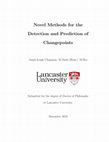Papers by Jamie-Leigh Chapman

Flyway‐scale analysis reveals that the timing of migration in wading birds is becoming later
Ecology and Evolution, 2021
Abstract Understanding the implications of climate change for migratory animals is paramount for ... more Abstract Understanding the implications of climate change for migratory animals is paramount for establishing how best to conserve them. A large body of evidence suggests that birds are migrating earlier in response to rising temperatures, but many studies focus on single populations of model species. Migratory patterns at large spatial scales may differ from those occurring in single populations, for example because of individuals dispersing outside of study areas. Furthermore, understanding phenological trends across species is vital because we need a holistic understanding of how climate change affects wildlife, especially as rates of temperature change vary globally. The life cycles of migratory wading birds cover vast latitudinal gradients, making them particularly susceptible to climate change and, therefore, ideal model organisms for understanding its effects. Here, we implement a novel application of changepoint detection analysis to investigate changes in the timing of migration in waders at a flyway scale using a thirteen‐year citizen science dataset (eBird) and determine the influence of changes in weather conditions on large‐scale migratory patterns. In contrast to most previous research, our results suggest that migration is getting later in both spring and autumn. We show that rates of change were faster in spring than autumn in both the Afro‐Palearctic and Nearctic flyways, but that weather conditions in autumn, not in spring, predicted temporal changes in the corresponding season. Birds migrated earlier in autumn when temperatures increased rapidly, and later with increasing headwinds. One possible explanation for our results is that migration is becoming later due to northward range shifts, which means that a higher proportion of birds travel greater distances and therefore take longer to reach their destinations. Our findings underline the importance of considering spatial scale when investigating changes in the phenology of migratory bird species.

This thesis focuses upon the detection and prediction of changepoints in time series. In particul... more This thesis focuses upon the detection and prediction of changepoints in time series. In particular, we develop a range of methods, both parametric and non-parametric, to detect, predict, and forecast in the presence of changepoints. We consider a range of data applications. These include economic, environmental and telematics data sets. The first part of this thesis concentrates on forecasting. We propose two approaches to incorporate changepoints into the forecasting process. Each of these approaches are flexible. Additionally, we develop methodology to predict future changepoints in a time series. In particular, we can predict changepoints at both future time points, and changes near the end of the time series for which we do not yet have enough observations to detect. This also includes a new approach to pre-whitening time series that accounts for changes in the second order structure of the explanatory time series. The second part of this thesis is concerned with changepoint de...
An assessment of practitioners approaches to forecasting in the presence of changepoints
Quality and Reliability Engineering International











Uploads
Papers by Jamie-Leigh Chapman